I spent the last few weeks in Indiana soaking up as much fieldwork as possible before school starts up again! Three weeks ago, our group set out on a (short) road trip to conduct the first formal survey of Snake Fungal Disease in Indiana! Thanks to Dr. Sarah Baker and Seth LaGrange we found some awesome snakes this week and I learned something new about myself…
My hard work and time spent with box turtles over the past year and a half has paid off because I am way more of a turtle magnet now (which is great… except when you are told to stop looking for turtles and find snakes!)
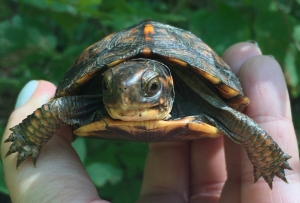
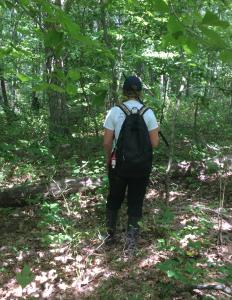
I personally did not have any luck finding snakes… but I did find a few box turtles (AND the lab does research turtles… so it does count for something?!). All fieldwork has its own challenges, but I learned pretty quick that SNAKES ARE A LOT BETTER AT CAMOUFLAGE AND ESCAPING THAN BOX TURTLES!! Turtling is quite different than snake searching and we have a whole lot of ground to cover in Indiana!
How we find snakes:
By foot (hiking) –
Search Technique: Go with a group! The more people, the better. We do not use dogs to find snakes like we do with turtles! All we have is the fan out method where we all spread out and try and cover as much area as we can by foot.
Indiana Snake Species Hints:
- Timber Rattlesnakes are often found coiled next to logs or inside hollowed out logs
- Common Garter and Ring-necked snakes are often hanging out under logs
- Worm snakes are often found under rocks in creek beds
- Water snakes are found on rocks near bodies of water or coiled over branches extending out over the water
Road Cruising (night drives) –
Search Technique: Drive slowly along park roads at night. Lots of false alarms (sticks can look like snakes)!
- ADVICE: Create a system where one person keeps eye on snake from the car! Otherwise you all jump out to grab your equiptment and have no idea where it went if it slithers into the grass
Species Hint:
- Roads retain heat and the snakes are attracted to the warmth of the roads when the sun goes down!
- Hit by car snakes are found this way (sadly)
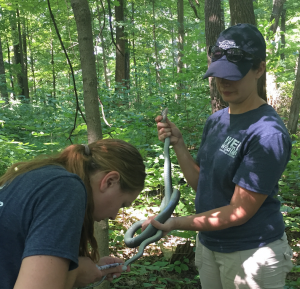
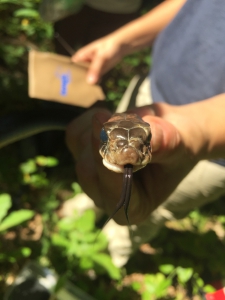
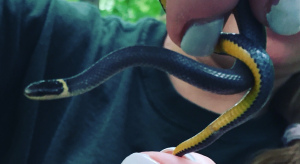
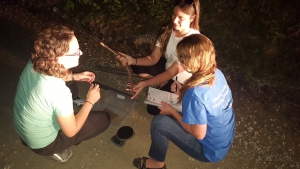
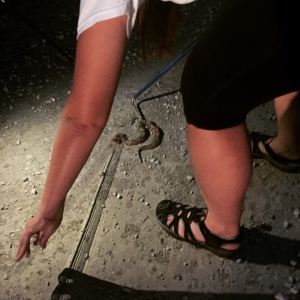
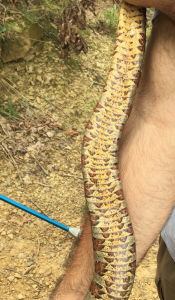
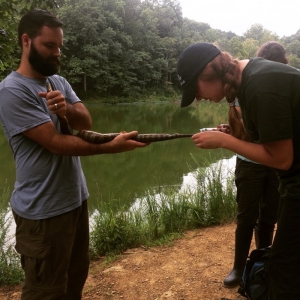
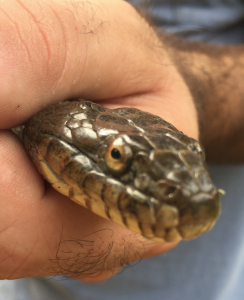
What we do when we find a snake:
- Safely restrain snake
- Use hook and tube for venomous snake
- Grab close up to the head of nonvenomous snakes to avoid getting bit
- Measure SVL and total body length
- Weigh snake, determine age
- Probe for sex determination
- Physical exam for SFD lesions, swab any lesions or surveillance body swab
- Draw blood for immunology study
- Location found with GPS coordinates
- Note behavior at capture and environment where found
- Note any abnormal PE findings
What we do with the information and samples collected:
- Extract DNA from swabs for SFD PCR (as discussed in previous blog!)
- Separate plasma from whole blood for immunology study
- Information logged in database of all snakes tested for SFD
- Post pictures on social media- check out our Instagram account!
- Write a blog!
